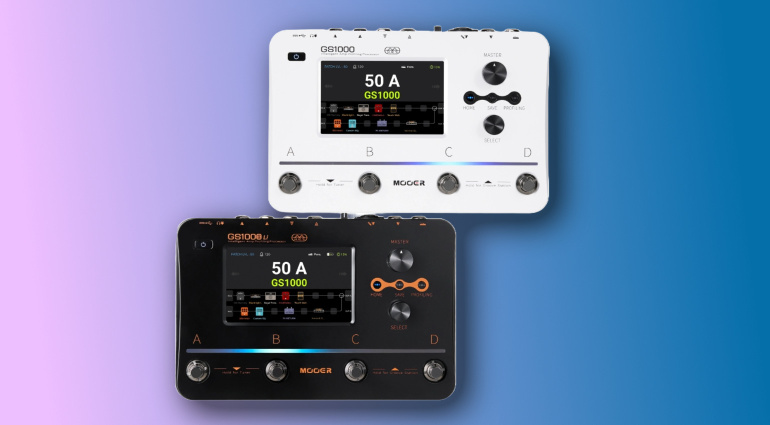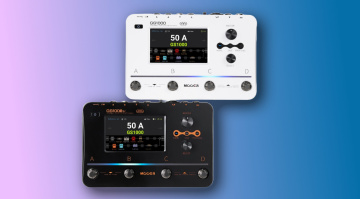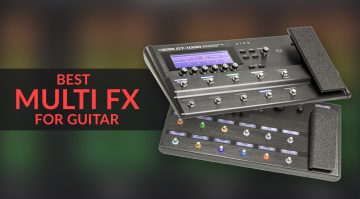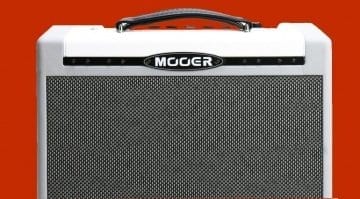Mooer GS1000 Might be the Ultimate Tonex Competitor
Profile your amps, distortion pedals, preamps, and cabs!

Mooer is on a roll. Hypermodern design, loads of well-thought-out features that put the competition in their place, outstanding sound quality – and often an outrageously good price. With the Mooer GS1000 and the battery-powered GS1000Li, the company is now venturing into the densely packed field of amp modelers and profilers.
Mooer GS1000: Amp Profiling with AI
One of the most fascinating differences between the guitar and DAW worlds is the attitude towards AI. While you get the impression that generative AI in particular, but also AI mixing tools, are demonized by many DAW users, it is quite common in amp profiling to work with neural networks and machine learning (subfields of AI).
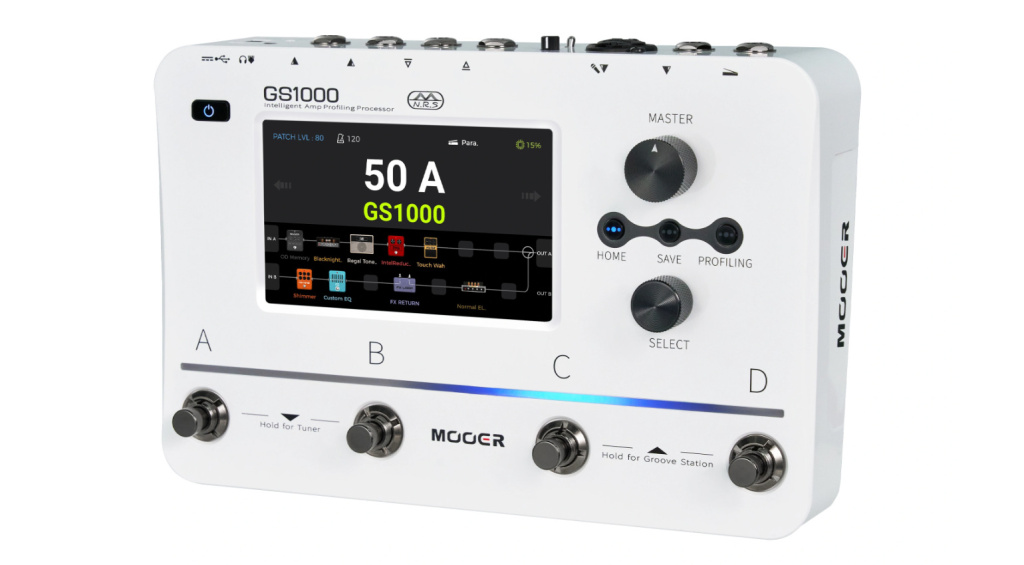
Here, fans of Kemper, Neural DSP, IK Multimedia, or Fender hardly mention the use of artificial intelligence to replicate pedal, preamp, or amp sounds. And so, the AI modeling technology MNRS 2.0 integrated into the Mooer GS1000 is simply another profiler at an extremely high level.
However, compared to MNRS 1.0, which Mooer used in multi-effects like GE200 Pro or GE1000, this new generation sounds significantly better and works more accurately. With MNRS 2.0, you can create amp profiles and profiles from your favorite preamps, distortion pedals, and cabs. So you can leave those expensive Klons, Tube Screamers, or Big Muff pedals in the rehearsal room.
Loaded with Features
The Mooer GS1000 comes with countless new features. There is space for 120 sampling profiles, a connection to the Mooer Cloud App for managing, saving, and loading profiles, an IR Loader for impulse responses with up to 2048 samples, and a whopping 350 pedal emulations. As we’ve seen from earlier Mooer multi-effects, these can be loaded in two parallel channels. A trails function is also included. This allows the reverb and delay tails to continue fading even after you have changed the preset.
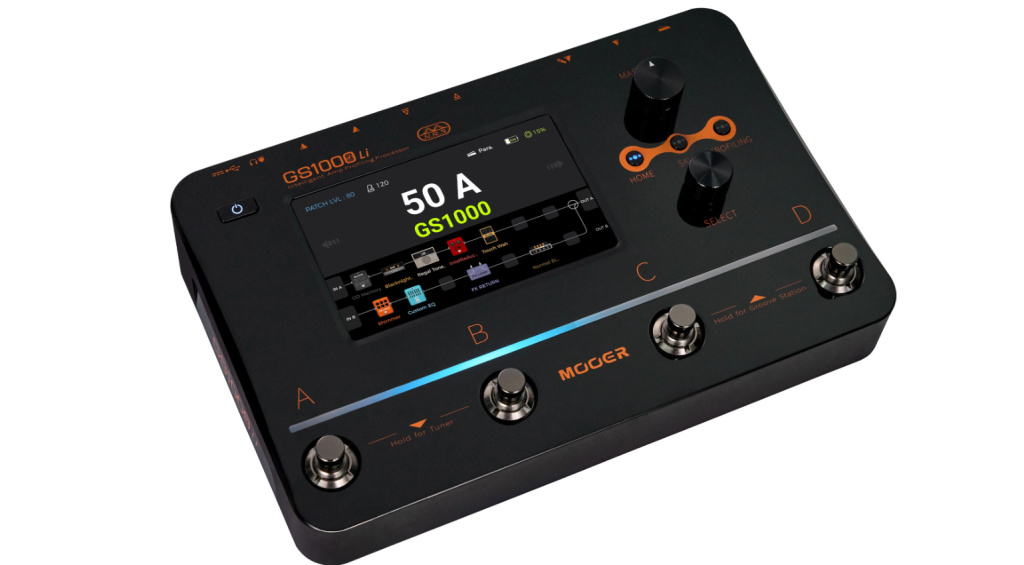
AI is also used in the GS1000’s Master EQ, which was available in earlier models but has been improved, according to the manufacturer. It can adapt in real time to your playing style and the resonances it creates to optimize the signal for a selected profile. Sounds exciting!
Drum Machine, Looper and a Touchscreen
It’s practically standard for Mooer multi-effects these days to include a drum machine (with 54 drum kits) and a looper (480 seconds of memory). That alone is rather rare in the world of amp-modeling pedals. It might also make the GS1000 the perfect partner for buskers and solo artists.
The GS1000 also features a five-inch touchscreen. We usually only see that in premium modelers like the Quad Cortex. From what it looks like in the pictures and videos, the touchscreen makes virtually all settings. Turning virtual knobs through sliding on a screen may not be for everyone, so you should be aware of this.
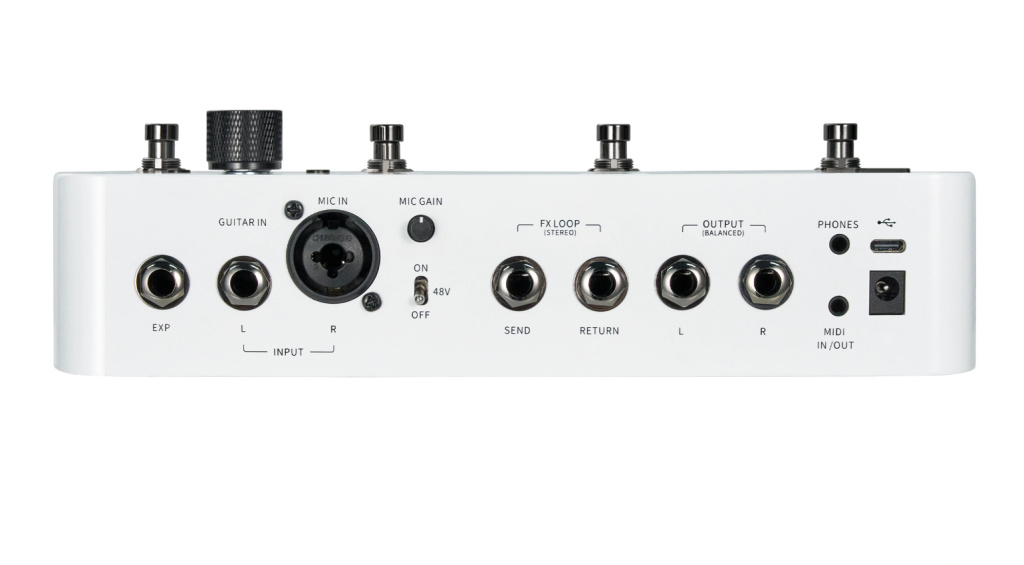
There is only one controller for Master Volume and another one titled “Select”. With the buttons “Home”, “Save” and “Profiling” you also have direct access to profiling and saving presets.
Mooer GS1000 Connectivity
The multi-effects processor’s I/O is located on the top panel. In addition to a connection for the guitar signal, there is also a second XLR/jack combo input (including optional 48-volt phantom power) – so the GS1000 is also suitable for vocals! A second instrument cable can also be connected to the combo input, allowing a stereo signal to be fed in.
It also features an expression input, stereo FX loop, stereo output, mini-jack headphone output, MIDI TRS jack (can act as either input or output), and a USB-C port. The pedal also features Bluetooth connectivity. When you connect the GS1000 to your computer, you can use the included software to edit presets or load your own IRs.
Or the pedal becomes a two-input, two-output audio interface for recording your guitar sounds directly into your DAW at up to 192 kHz sample rate! And let’s not forget: the four footswitches allow you to switch between presets and banks.
How much does the Mooer GS1000 cost?
As we’ve seen from other Mooer series, in addition to the normal version, there is also one with a built-in lithium battery, the GS1000Li. Its capacity is 4750 mAh and is supposed to last up to six hours. The standard version of the Mooer GS1000 in white costs 449 euros at Thomann*, while the black edition GS1000Li goes for 499 euros at Thomann*. Both will be available to order from Thomann starting tomorrow, January 18, 2025.

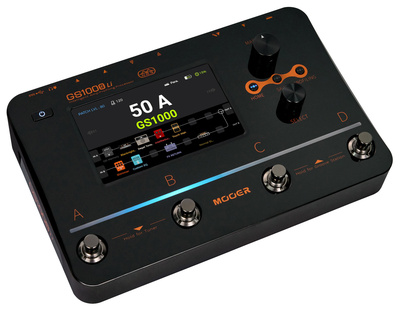

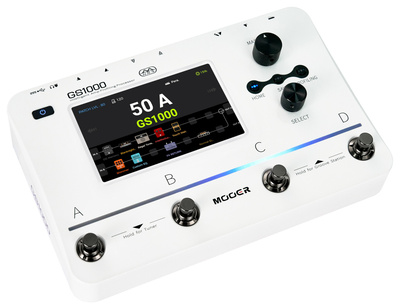
More on the New Pedal from Mooer
*Disclaimer: This post contains affiliate links and/or widgets. When you buy a product via our affiliate partner, we receive a small commission that helps support what we do. Don’t worry, you pay the same price. Thanks for your support!
 4,8 / 5,0 |
4,8 / 5,0 | 